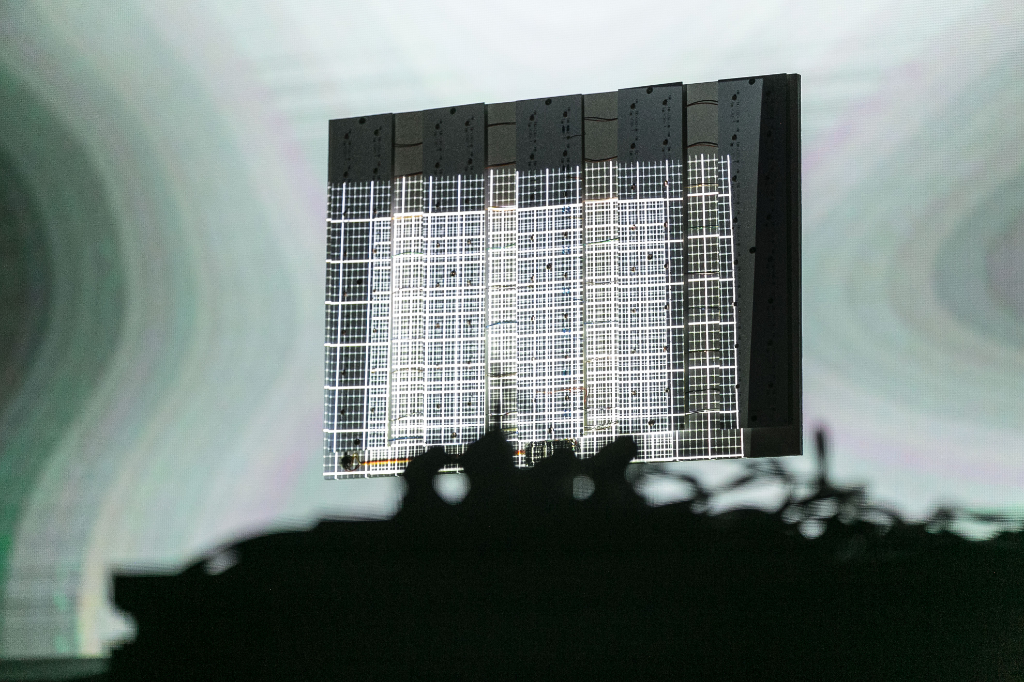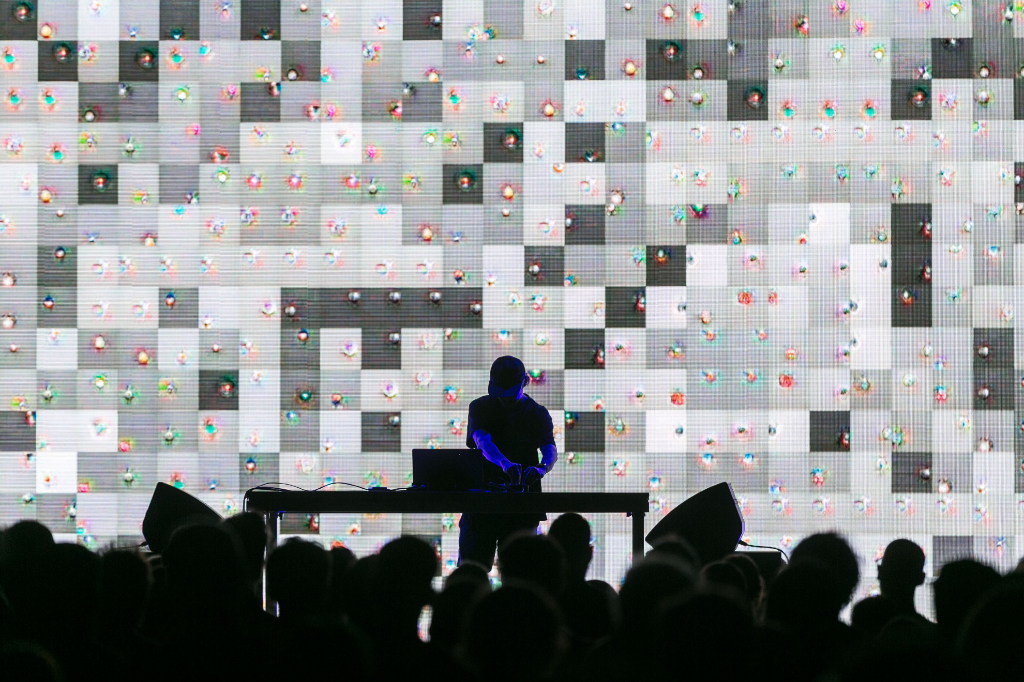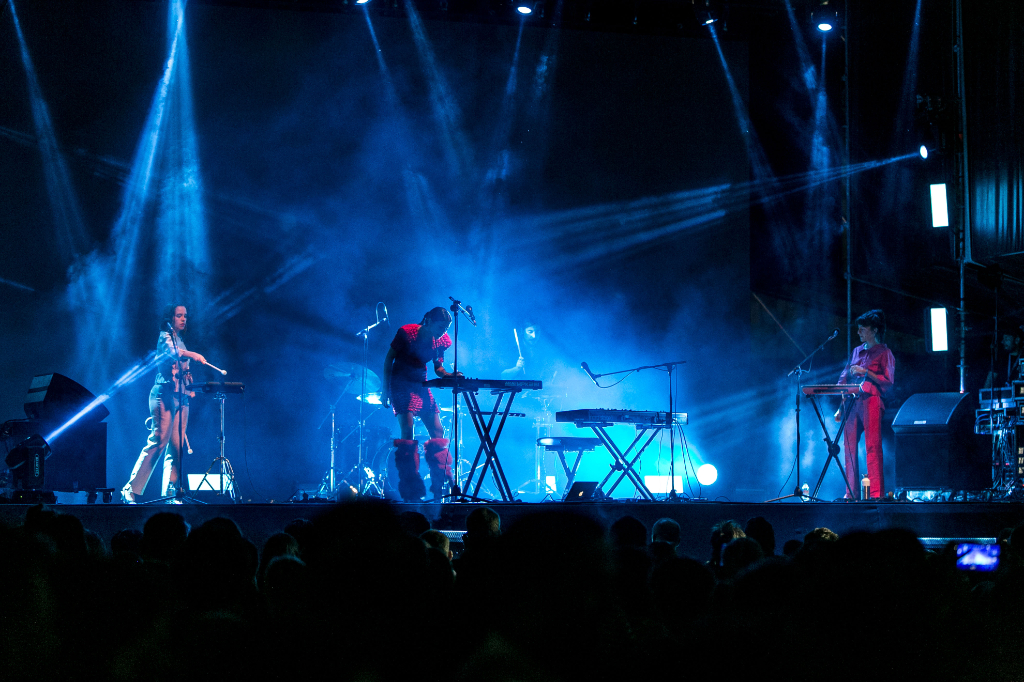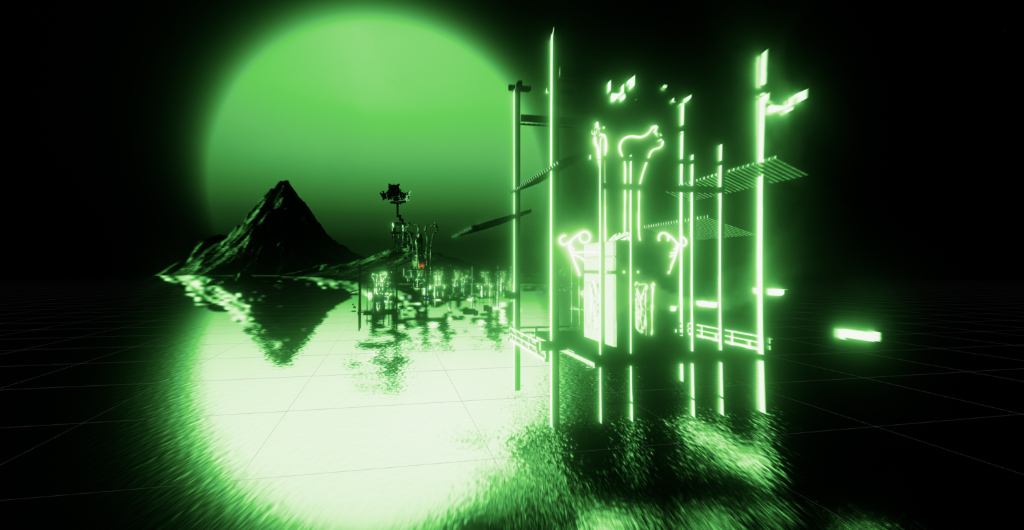Text by Jacobo García & Ana Moriyón

In the year of the so-called return to normality, everything seems normal, except it is not. After emerging from the nightmare, panic and paranoia of two years of lockdowns, restrictions, vaccines and whatnot, the European music scene is back in full effect: concerts and festivals are again part of the new normality, as if COVID never happened, except it happened, but something still feels not right yet.
LEV festival premiered in Madrid in 2019, an opulent showcase with 3 stages of shows, installations and the Vortex program. The programme started in the evening and reached the early hours of the night. This edition was somehow downsized from 2019 to three or four concerts per day, installations, and the Vortex program, still an advance from 2020 and 2021, where the festival offering was severely reduced by COVID. A comeback to the earlier form will enormously enhance the experience and impact on audiences.
The tightly packed and varied program was sound, the virtual, the physical and their relationships through performative technology by means of contemporary cultural thought. This was the medium through which the festival challenged our feelings of the present and our conceptions of collective immersion. These acts overall were sprinkled with representations of melancholy and control. A silenced echo between the shows was felt. Density prevailed. Does the current military zeitgeist have anything to do with it? Maybe, but feeling and immersing together as a collective during three days made it all that lighter. The collective ritual offered an optimistic momentum of thrusting forward.
Jarring sounds of Daito Manabe accompanied by glitchy visuals of Kamitani Lab. They presented Dissonant Imaginary, which explores the effects of music on the brain by analyzing images of brain scans, which were also used for the visuals. Also worthy of mention were Spin by Robert Lippok and Lucas Gutierrez. In the show, aluminous fluids, elephant skin and pearls were presented as visual textures, paired with feral, cathartic, progressive and aggressive sounds, as part of a performance that attempts to use all of those aspects to create a meditation space inside the chaos generated.
On Friday, Ziur’s wailing enraptured the audience with her unsettling anguish, angst, pain, and existential groan. A dissociative amalgam of sonic textures wrapped in hues, light beams and shadows. One of the best shows of the festival. After that, Meuko Meuko presented Invisible General. The overwhelming turbulences of metal-inspired music, a sonic barrage and a meta-syncopation formed their work. Accompanied by NONEYE’s visuals, a look at real-time navigation through future gaming portals and distorted architectural elements: a portal to our digital lives. It provided a fitting conclusion to the second night of concerts.
Saturday was conquered by one of the sensations of 2022. Marina Herlop’s record Prypiat has been a favourite of everyone. Her music is an exquisite virtuoso ensemble of vocal delicacies interwoven with sparse rhythms and whimsical electronic gifts. It delivers an experience that draws on the ancient and the current to deliver both musical progress and earthly delight.


Right: Marina Herlop

VORTEX is now a consolidated event inside the program of LEV, composed of six immersive experiences; this year concentrated on Nave 17. The echoey silence created within the space of individuals looking up, down and all around, and as far as the chord would let them turned Nave 17 into a dreamy backdrop. That scene was accompanied by a pinkish hue that was an experience in itself by contemplating the outskirts of inmersiveness or maybe even: the type of space the future beholds.
Leaving the outskirts behind, the diverse collection of pieces touched upon narrative, medium, memory and digital spatiality without an apparent nexus or link between them, except for the headsets. The only work that didn’t involve them was Future Dance of Nostalgia, created by visual artist and designer Kexin Hao. In a cross-over between motion-tracked Just Dance and pre-industrial, heavy physical labour and work songs, Kexin is able not only to bring historical memory to the body but to create interactive togetherness through a compelling conceptual narrative.
Employing experimental storytelling, the topic of memory – this time under a three-part VR Cinema format – was also seen in Archer’s Mark & Atlas V’s On The Morning You Wake (To The End Of The World) in collaboration with Oculus for Good. Part documentary, part anti-nuclear activism piece, the VR medium was used to captivate, educate and transmit feelings of fear through an engaging exploration of immersive representation.
Present in both Live AV and VORTEX, Meuko Meuko and NAXS Corp was able to sew the two events together through distinct interactive mediums, laying in the same space and sound-scapes of futuristic videogames, a malfunctioning metaverse. INVISIBLE GENERAL (Live AV) presented a collective, immersive, real-time experience of imagined ruins developed by technological traditions. This urban vs nature takeover had the extremely opposite effect than in Ghost Island, an individualistic peregrination through urban scrapyards and majestic spiritual landscapes.
The comparison boils up to the question: does collectiveness have a say in immersive experiences? Is travelling with 200 other overwhelmed people to Invisible General’s cityscapes more engaging than travelling through Ghost Island on your own in an incense-infused space? Be as it may, Meuko Meuko and Naxs Corp target everything through slick visuals and a personal style of sound aggression.
The collective experience at LEV left a few questions: how to thread the enormous diversity in themes and outputs? What sense does virtual reality make when returning to the physical world? Which role folk musical traditions will inhabit in the future to explore the avant-garde? Is this new normality actually normal? Or will this decade mean constant navigation through uncertainty? We expect to find the answers in subsequent editions.





